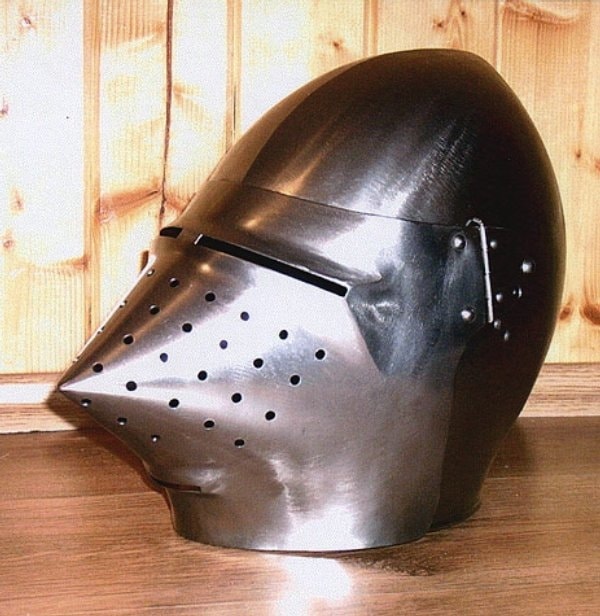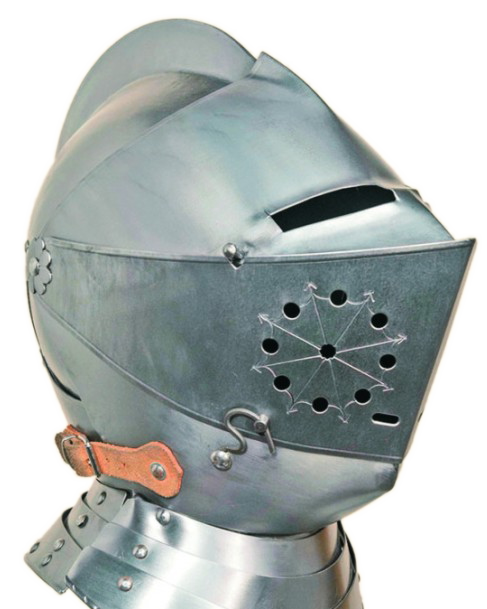

However, the ancient Greek helmet known as Illyrian Helmet was originally developed on the Peloponnese and quickly became popular throughout Greece. The Illyrian Helmet is iconic among Greek helmets and called so because of its popularity amongst the Macedonians and non-Greek Illyrians. Illyrian Helmet – the iconic Greek helmet with the horsehair crest The Boar’s Tusk Helmet was an effective display of skill as each helmet required somewhere between forty and fifty boars. Hunting was a frequent theme in Mycenaean art, and boar was often the target. Unlike the later, more battle-focused Greek helmets, it is believed that the Boar’s Tusk Helmet may have been a prestige item related to hunting prowess. Another decoration, which appeared in Greek helmets only during the Bronze Age, was the addition of bull’s or ram’s horns.

#Authentic medieval helmets for sale series#
They were formed from a single vertical series of boars’ tusks. Cheek guards were often added to the helmet to offer extra protection. This conically shaped helmet consisted of alternating levels of boars’ tusks which were sewn into a felt or leather cap which served as the base of the helmet.īoar’s Tusk Helmets did not have a uniform design. The Boar’s Tusk Helmet was introduced in the 17th century BCE, when the Mycenaean Empire controlled Greece. Boar’s Tusk Helmet – the Greek helmet of hunting prowess


 0 kommentar(er)
0 kommentar(er)
